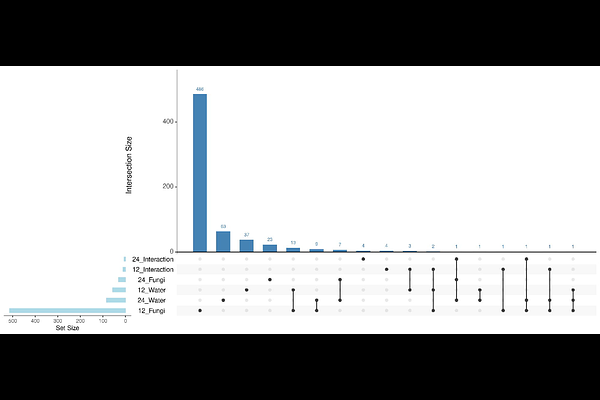Integrative Multi-Omics Analysis Reveals Stress-Specific Molecular Architectures in Soybean under Drought and Rust Infection

Integrative Multi-Omics Analysis Reveals Stress-Specific Molecular Architectures in Soybean under Drought and Rust Infection
Husein, G.; Castro-Moretti, F. R.; Prado, M.; Amorim, L.; Mazzafera, P.; Canales, J.; Monteiro-Vitorello, C. B.
AbstractAsian soybean rust (ASR), caused by Phakopsora pachyrhizi, represents a major constraint to soybean cultivation, with yield losses approaching 90% in the absence of effective control strategies. When coupled with the increasing incidence of drought driven by climate change, the co-occurrence of these biotic and abiotic pressures imposes a complex challenge for crop resilience. In this study, we explored the molecular responses of soybean (Glycine max) to concurrent water limitation and ASR infection through an integrative analysis of transcriptomic and metabolomic datasets. To capture both linear and conditional relationships among molecular features, we employed Weighted Gene Co-expression Network Analysis (WGCNA) alongside Copula Graphical Models (CGMs). WGCNA identified 17 gene co-expression modules exhibiting significant correlations with 27 annotated metabolites. Among these, abscisic acid showed consistent associations with drought-responsive modules enriched in central metabolic pathways and transcription factors such as Dof and bHLH. In contrast, modules linked to fungal infection were correlated with dipeptides and D-galacturonic acid, implicating early defense signaling and cell wall remodeling. The CGM framework further revealed sparse, condition-specific networks of differentially expressed genes and metabolites directly associated with each stressor, including genes encoding a dirigent-like protein, pentatricopeptide repeat proteins, and a nucleoredoxin, as well as metabolites such as inosine, Epi-dihydrophaseic acid and 2-oxoadipic acid. Notably, no gene or metabolite was found to be directly responsive to both stresses, underscoring the modular and stress-specific architecture of soybean defense. Together, these results highlight a hierarchical regulatory structure and demonstrate the value of combining correlation-based and dependency-driven models to identify candidate targets for multi-stress resilience breeding.